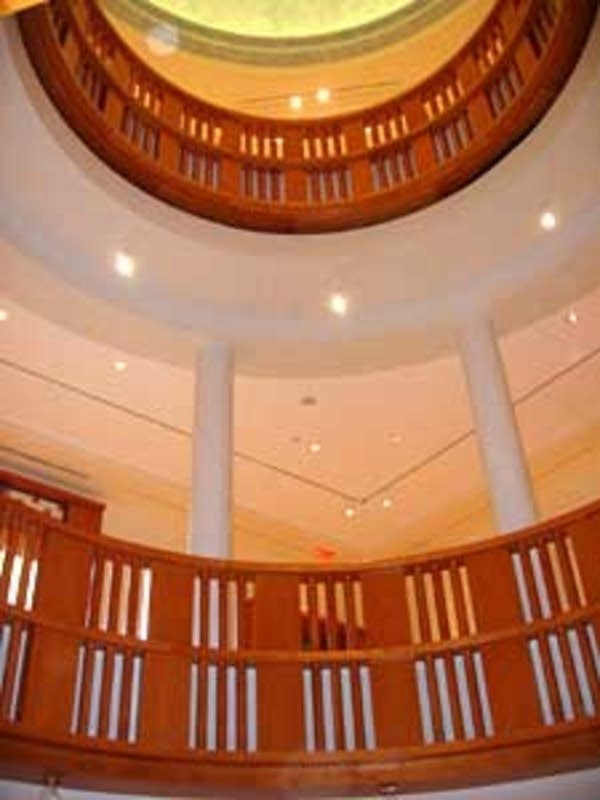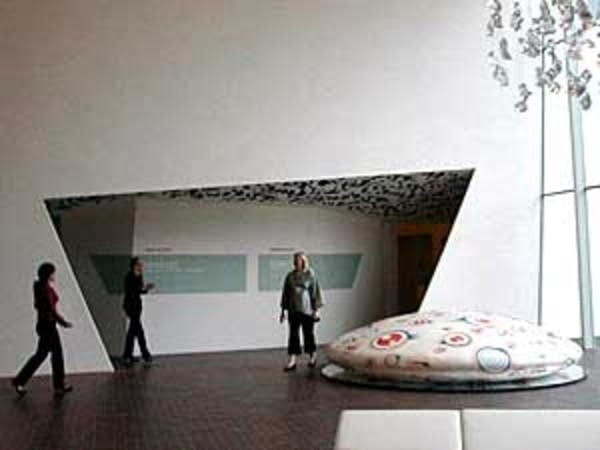New Minneapolis architecture has national profile
Go Deeper.
Create an account or log in to save stories.
Like this?
Thanks for liking this story! We have added it to a list of your favorite stories.

Asked to list the national and international news outlets covering the opening of the new Guthrie, the theater's Communications Director, Melodie Bahan, takes a deep breath and begins:
"Well, Time, Newsweek, New York Times, L.A. Times, Chicago Tribune, Travel & Leisure, House & Garden, Bloomberg News, Architectural Record...."

The official unveiling of the new Guthrie isn't the only reason for all the media commotion. There's also the newly expanded Minneapolis Institute of Arts and Children's Theatre Company, and the new Minneapolis Public Library, all designed by internationally known architects and completed within months of each other.
The media spotlight began to shine more than a year ago when the Walker Art Center reopened its doors. It's led Travel & Leisure magazine to name Minneapolis one of its top five destinations in 2006, the only American city on the list.
Turn Up Your Support
MPR News helps you turn down the noise and build shared understanding. Turn up your support for this public resource and keep trusted journalism accessible to all.
According to public radio travel expert Rudy Maxa, these kinds of amenities matter to the cultural tourist. Maxa says look at what the Frank Gehry-designed museum did for Bilbao, Spain, or consider Fort Worth, Texas, with its surprising number of museums.

"People go to Fort Worth just for that," Maxa says. "I can't think, frankly -- excuse me all lovers of Fort Worth -- of any other reason to go there. But people will make a place a destination because of such things as restaurants, art museums and theater."
So will conventioneers, says Sam Grabarski, president and CEO of the Downtown Business Council in Minneapolis. Grabarski predicts there will be a significant upswing in higher profile convention business as a result of the local arts building makeover. It affirms, perhaps once and for all, that Minneapolis is not a cold Omaha.
More important for Grabarski is how it can lure young, highly educated professionals, the so-called creative class, to move here from other parts of the country. Grabarski says they're looking for culturally vibrant places, and all the coverage will make them take notice.
It's very positive publicity, and a very positive trend for the Twin Cities.
"They do pay attention, they do read the variety of publications that are taking notes, and they do pay attention to what's going on here. It's very positive publicity and a very positive trend for the Twin Cities," says Grabarski.
University of Minnesota arts economist Ann Markusen acknowledges that there's a lot of coverage. But, "the interesting question is, will there be a patronage response?"
Markusen agrees that any positive media attention, especially the concentrated kind that's been occurring lately, can only strengthen the Twin Cities' national image. But will new visitors fill the expanded cultural spaces?
"There's a kind of chicken-or-egg question here," Markusen says. "Will the additions to these arts institutions simply draw people away from other existing spaces in the Twin Cities, or will they really excite more people about participating and increase overall participation?"

Markusen says increases in cultural tourism or even convention business can't hurt, but won't be enough to fill the extra seats, gallery spaces or public meeting areas throughout the year. She says the biggest arts-going audience is the people who live here, and the largest gain in that audience will come from a change in their consumption patterns.
"If, instead of going to the Mall of America, they go to the theater more often, then it can have a powerful effect on your local economy," says Markusen.
Markusen says the power of the Guthrie, the MIA and other new cultural buildings to attract the creative class from elsewhere in the country may not be as strong as boosters claim. She says the Twin Cities' biggest attraction for the creative class is already being demonstrated -- young college graduates from greater Minnesota and the Upper Midwest, drawn here by the active music scene.

As far as the Guthrie's Melodie Bahan can tell, it's not theater programming that's driving all the national coverage of this weekend's opening. It's the sparkling new architecture. Bahan worries the Guthrie's geographic location keeps it off the national theater radar.
She was reminded of that recently by an e-mail question that came from the theater critic of a large newspaper.
"He says, 'Didn't the theater just have a big opening of some kind?' So we're clearly not a part of their world view yet."
Bahan believes that will change once the new Guthrie gets going.
She also hopes that writers who come to the Twin Cities will look beyond the arts heavyweights and discover something else worth writing about -- the thriving art scene that surrounds them.
Dear reader,
Political debates with family or friends can get heated. But what if there was a way to handle them better?
You can learn how to have civil political conversations with our new e-book!
Download our free e-book, Talking Sense: Have Hard Political Conversations, Better, and learn how to talk without the tension.




